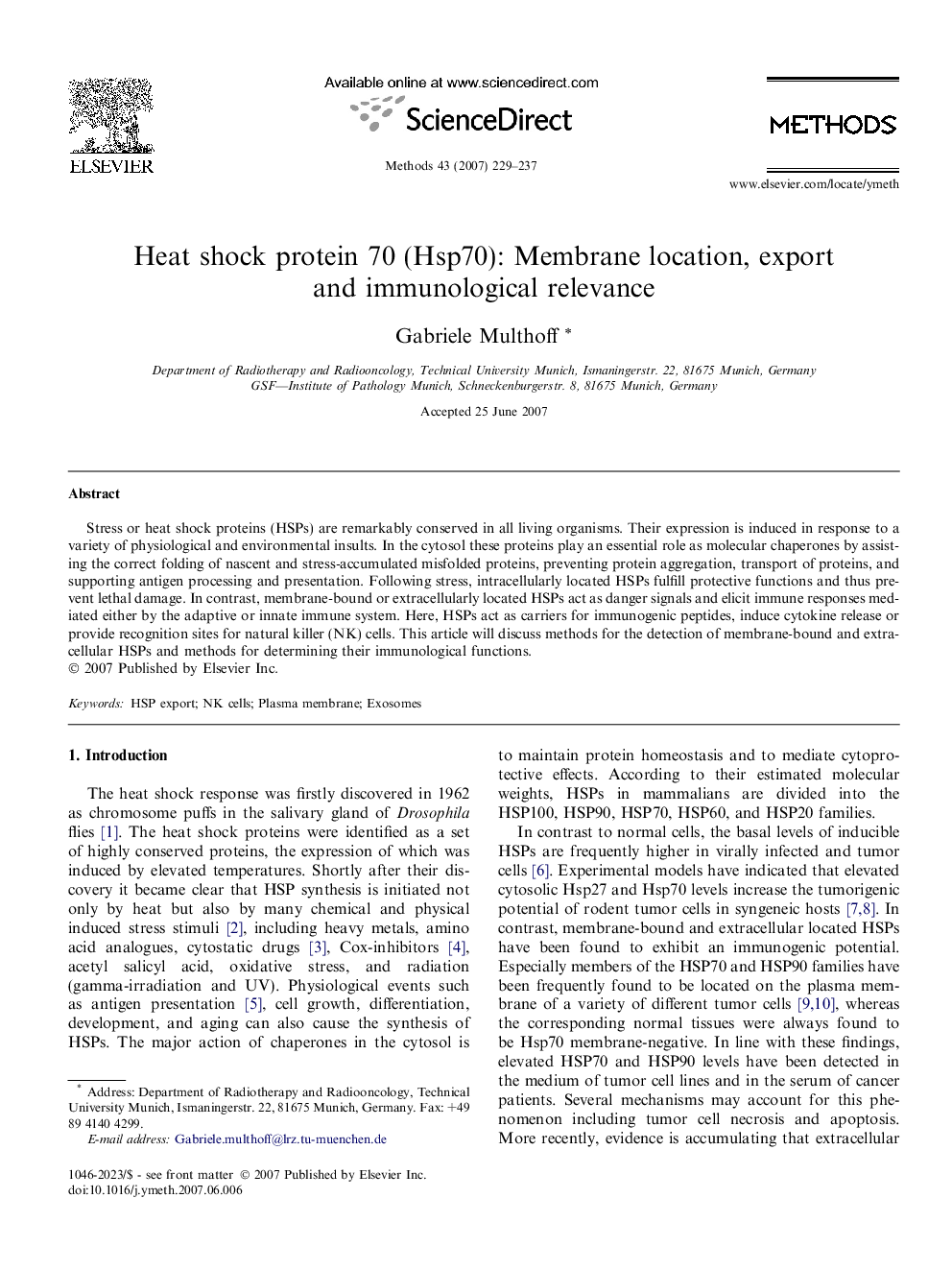| Article ID | Journal | Published Year | Pages | File Type |
|---|---|---|---|---|
| 1994489 | Methods | 2007 | 9 Pages |
Stress or heat shock proteins (HSPs) are remarkably conserved in all living organisms. Their expression is induced in response to a variety of physiological and environmental insults. In the cytosol these proteins play an essential role as molecular chaperones by assisting the correct folding of nascent and stress-accumulated misfolded proteins, preventing protein aggregation, transport of proteins, and supporting antigen processing and presentation. Following stress, intracellularly located HSPs fulfill protective functions and thus prevent lethal damage. In contrast, membrane-bound or extracellularly located HSPs act as danger signals and elicit immune responses mediated either by the adaptive or innate immune system. Here, HSPs act as carriers for immunogenic peptides, induce cytokine release or provide recognition sites for natural killer (NK) cells. This article will discuss methods for the detection of membrane-bound and extracellular HSPs and methods for determining their immunological functions.
